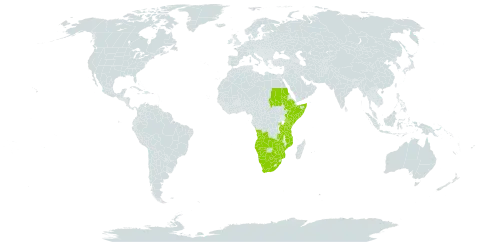Stems filiform, 1-2 mm in diameter. Leaves alternate, subopposite to verticillate above, usually densely spaced on the stems, spreading, soft, thin, transparent, linear, average size 14 mm long and 0.5 mm broad, marginal cells chlorophyllous, the many sharp curved teeth pointing upwards, situated on small triangular excrescences; leaf-tips bi-dentate; central area beside the midrib narrow to very broad, consisting of large lacunar cells without or with very little chlorophyll, usually with distinct transverse veins. Male inflorescence with spathe-valves cup-shaped, obovoid, 2 mm long, acute at first, becoming broad and gaping during anthesis, with about 8 teeth on each side. Female inflorescence with spathes forming a narrow ovoid tube 2.5 mm long, entire or with some small teeth; perianth white, limb 2 mm in diameter; ovary with 24-30 ovules, funicles about as long as the ovules; stigmas with short papillae. Capsule ovoid, acuminate, 3 mm long, many-seeded; seeds 1 mm long, turbinate, with raised ridges which have transverse septa (when dry).
Aquatic herb, submerged. Leaves alternate, opposite or occasionally verticillate, central area broad, usually with transverse septa. Leaf teeth on excrescences. Female flowers white.
